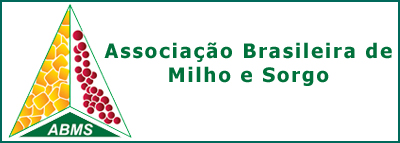MAJOR EFFECT QTL ON CHROMOSOME 3 CONFERRING MAIZE RESISTANCE TO SUGARCANE MOSAIC VIRUS
DOI:
https://doi.org/10.18512/1980-6477/rbms.v18n3p322-339Keywords:
Zea mays L ., Potyvirus, Marcadores SNP, Genes, Linhagens tropicais.Abstract
The Sugarcane mosaic virus (SCMV), a maize pathogen epidemic worldwide, is the causal agent of common mosaic, one of the most important viral diseases in Brazil. In this study, we mapped and characterized quantitative trait loci (QTL) conferring resistance to SCMV in a maize population consisting of 127 F2:3 families from the cross between two Brazilian maize inbred lines, L18 (resistant) × L19 (susceptible). Field trials were carried out in two years to evaluate the F2:3 families according to a resistance score after artificial inoculation. QTLs were detected via composite interval mapping, using a linkage map based on 82 SSRs, 3 CAPS and 296 SNPs. The heritability ranged from 73.68 to 95.16% and SCMV resistance QTLs were consistently identified on chromosomes 1 and 3, showing minor and major effects, respectively. The major QTL on chromosome 3 explained a large proportion of the genetic variance, being 50 and 70% in year 1 and 2, respectively, while the minor QTL on chromosome 1 explained 11 and 8% in year 1 and 2, respectively. The SNP marker co-localized with the major QTL peak on chromosome 3 and its right flanking marker are positioned inside the predicted gene GRMZM2G122443 encoding a glucosidase II, and the left flanking marker inside the GRMZM2G140537 that encodes a protein tyrosine kinase. Moreover, within this QTL region there are also the GRMZM2G160902 and GRMZM2G122481 predicted genes, encoding a bZIP transcription factor and a cytochrome C oxidase, respectively. The colocalization with this major effect QTL suggests a putative involvement of these candidate genes with maize responses to SCMV resistance, but further functional studies are required for such validation. Our results provide resistance source and genomic target for marker-assisted breeding aiming the development of maize resistant cultivars to SCMV.
Downloads
Published
How to Cite
Issue
Section
License
Authors retain copyright and grant the journal right of first publication with the work simultaneously licensed under the Creative Commons Attribution License that allows the sharing of work and recognition of the work of authorship and initial publication in this journal.
Authors are able to take on additional contracts separately for non-exclusive distribution of the version of the paper published in this journal (eg, in an institutional repository or publish as a book), with acknowledgment of its initial publication in this journal.
Authors are permitted and encouraged to post their work online (eg, in institutional repositories or on their website) at any point before or during the editorial process, as this may leadto productive exchanges, as well as increase the impact and citation of published work.



